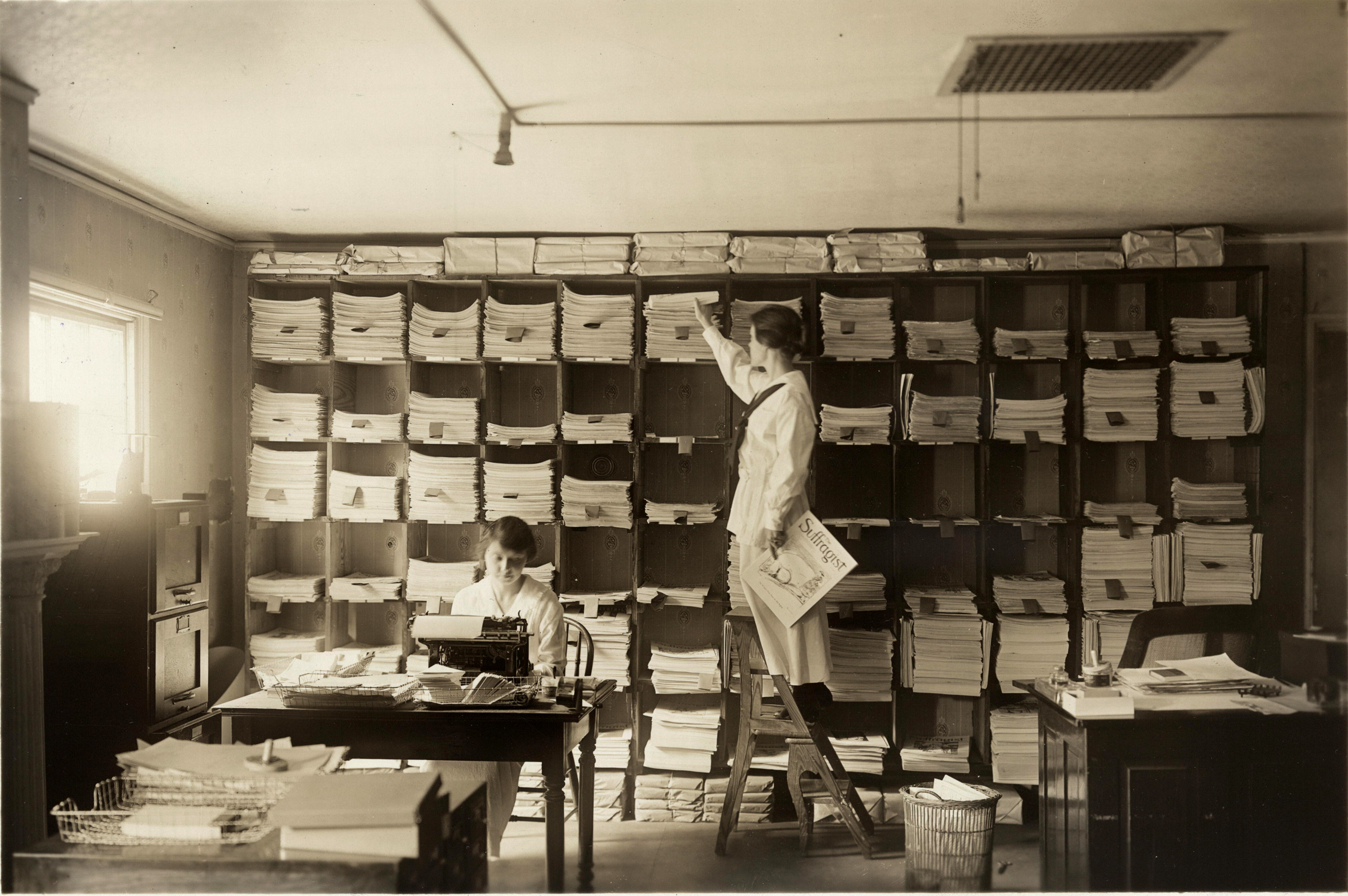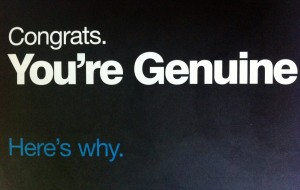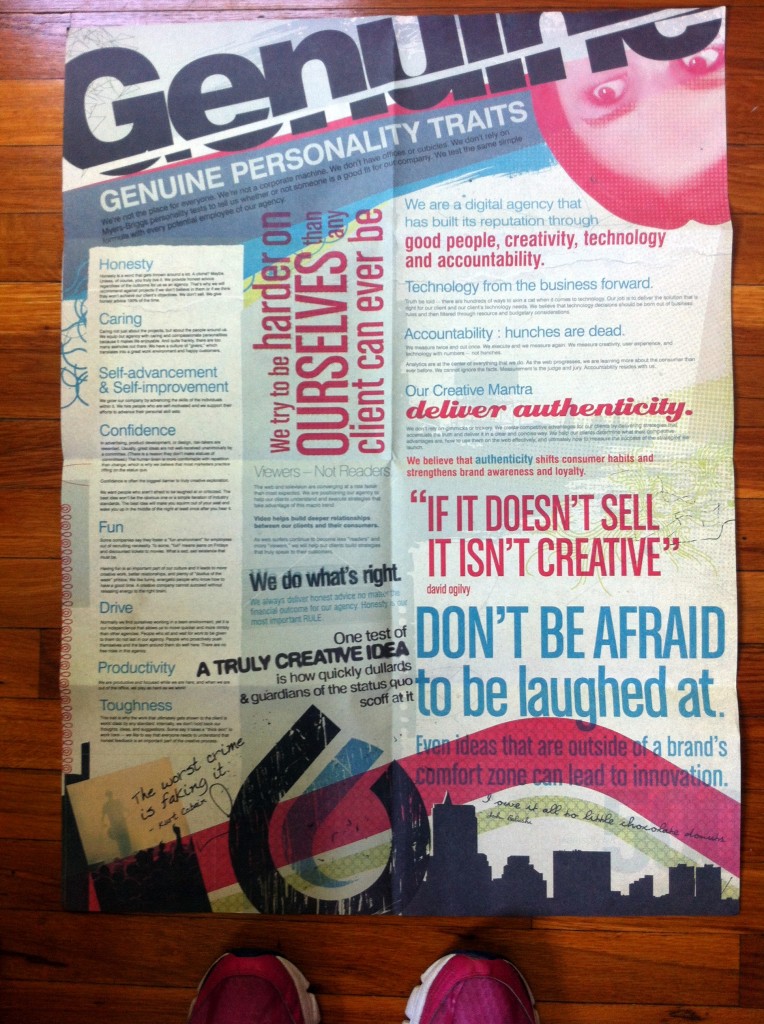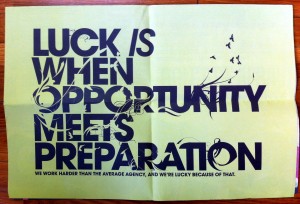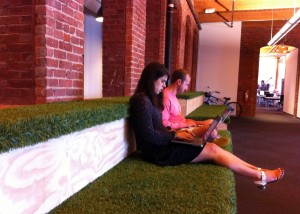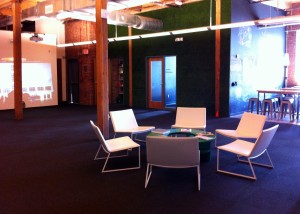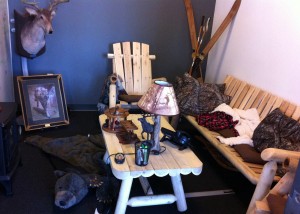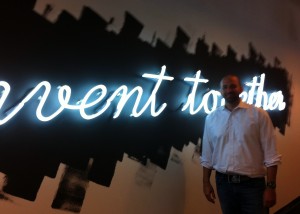One of our colleagues answered the survey question “Are there any for-profit/corporate organizations that you think have great workplace cultures?” with a company called Genuine Interactive. Since they are based here in Boston, I had to check them out.
I visited their offices last Friday with Chris Pape, Executive Creative Director/Founder. Here’s a handout that greeted me at the welcome desk:
Let me explain this document. It is a large, fold out poster (21″ x 29″) outlining the kind of person they want to work at the company. It’s filled with quotes challenging the status quo and describes the company’s ideals (including Fun, Honesty, Drive, and Productivity).
Have you ever seen anything like this at a museum workplace? How much would you love to have this greet you when you came in for an interview? I was sold before the tour even began.
Chris walked me around the large space. As he says, the design is done cheaply (“Everything is from Ikea”) but it maximizes interaction between employees. The welcome desk, cafeteria, and hang out spaces are in the direct center of the office and lovingly referred to as “The Town Green.” This is where social events are held on select Fridays and lunch is delivered every day (I know, I know, but keep reading– I promise there are lessons here museums can learn).
On a Friday afternoon in August, the work spaces were quiet. A large meeting was happening in the “Biggie” conference room (named after rapper Biggie Smalls; other rooms have names of “people who didn’t listen to the focus groups of their time” such as Kurt Cobain and Jackie Robinson). The cabin room was also empty, but looked like it would be a fun place to hang out for a meeting.
When we sat down to talk, Chris described the work culture at the company. Here are some of his ideas that stuck with me:
- There are no cubicles or offices because it is important it is for everyone to hear each other. In many workplaces you are concerned about disrupting others with noisy conversations, but here overhearing is to everyone’s advantage. Information is out there.
- Inspiration needs to exist physically in the space to spark further inspiration. They have art projected on the walls and the aforementioned fun spaces to facilitate interaction and ideas.
- Work culture needs to be started by management; it can’t come out of nowhere. But after that it has to grow organically. They have an in-house team devoted to work culture named the French Toast Mafia (they named themselves) who organize fun monthly events to spark ideas and encounters.
- At their company, culture is very important. It is so important that it is a bullet point on the agenda at weekly meetings of the managing team. They discuss it every single week.
- They spend “a lot” of money on culture. A lot. Lunches, parties…these don’t come cheap. BUT, most of this is time, billable hours (which, Chris points out, museums don’t have to worry about).
- Hiring well is key to the company’s success. The hiring team will spend 5 minutes talking about a prospective hire’s skill set and another hour debating if they will be a good fit within the culture.
The result of all this attention to culture means that “the assholes are weeded out” and that project teams create the best product possible. Sure it can be hard to justify spending money on culture, especially when it is hard to quantify the results. But can you put a price on liking who you work with?
The world’s best museums are known to put their visitors first. But what if we all decided to put our workers first?
I realize there’s a lot to unpack here, so I’ll just ask you a few questions:
- Where is your workplace’s “town green?” Where do your staff go to interact?
- Where do your staff go to work if they don’t want to work at their desk?
- Providing lunch to everyone every day is probably not financially possible. But what else could you provide every day to bring people into the same space?
- What are you creating at your museum that is inspiring? Do the staff interact with this or know about it? How can you put it front and center?
- Do you give tours of your work spaces? If not…why not? What would it take to turn it into a place you are proud of?
- What message are you sending to potential hires? How inspiring is your language? What could you say in a job posting to give a sense of your organizational culture?
Thanks, anonymous colleague, for your recommendation! I’m certainly open to more.
